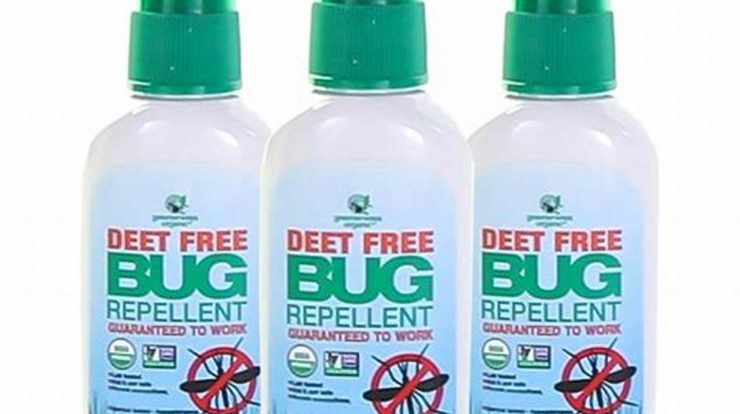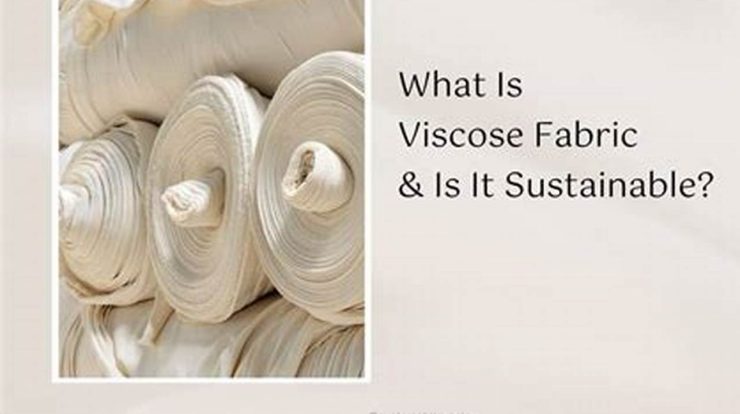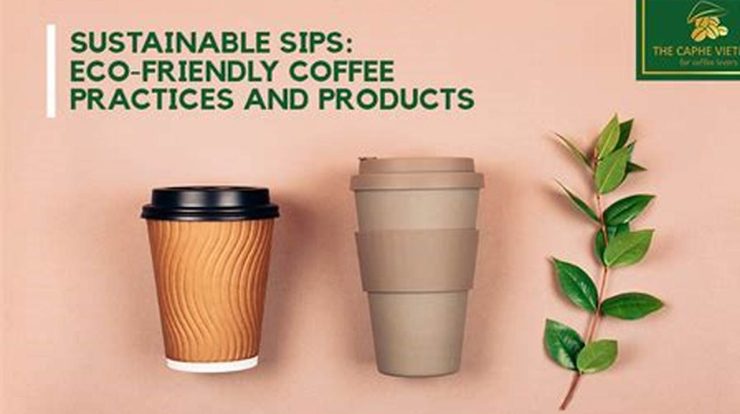Table of Contents
Eco-Friendly is a term used to describe products, services, or practices that are not harmful to the environment. It can also be used to describe materials or substances that are not harmful to the environment, such as biodegradable materials or recycled materials.
Editor’s Note: This article defines eco-friendly and explains its importance.
Being eco-friendly is important because it helps to protect the environment for future generations. When we use eco-friendly products, we are helping to reduce pollution, conserve resources, and protect wildlife. There are many ways to be eco-friendly, such as using less energy, recycling, and buying products made from sustainable materials.
Here are some of the benefits of being eco-friendly:
- Reduced pollution: Eco-friendly products and practices can help to reduce air, water, and land pollution.
- Conserved resources: Eco-friendly products and practices can help to conserve resources such as energy, water, and raw materials.
- Protected wildlife: Eco-friendly products and practices can help to protect wildlife and their habitats.
Making eco-friendly choices can make a big difference for the environment. By choosing to buy eco-friendly products, recycle, and conserve energy, we can all help to create a more sustainable future.
Eco-Friendly
Eco-friendly is a term used to describe products, services, or practices that are not harmful to the environment. It can also be used to describe materials or substances that are not harmful to the environment, such as biodegradable materials or recycled materials.
- Sustainable: Eco-friendly products and practices are designed to be sustainable, meaning that they can be used without depleting natural resources.
- Renewable: Eco-friendly products and practices use renewable resources, such as solar and wind power.
- Biodegradable: Eco-friendly products and practices use biodegradable materials, which break down naturally over time.
- Recyclable: Eco-friendly products and practices are designed to be recycled, which helps to conserve resources and reduce waste.
- Non-toxic: Eco-friendly products and practices do not contain harmful chemicals or toxins.
- Energy-efficient: Eco-friendly products and practices use less energy, which helps to reduce greenhouse gas emissions.
- Water-saving: Eco-friendly products and practices use less water, which helps to conserve this precious resource.
- Waste-reducing: Eco-friendly products and practices reduce waste, which helps to protect the environment and conserve resources.
- Environmentally friendly: Eco-friendly products and practices are designed to be environmentally friendly, meaning that they have a minimal impact on the environment.
- Sustainable development: Eco-friendly products and practices contribute to sustainable development, which is a way of meeting the needs of the present without compromising the ability of future generations to meet their own needs.
These are just a few of the key aspects of eco-friendly products and practices. By choosing to buy eco-friendly products and adopt eco-friendly practices, we can all help to protect the environment and create a more sustainable future.
Sustainable
Sustainability is a key aspect of eco-friendly products and practices. It means that these products and practices are designed to be used without depleting natural resources. This is important because it helps to protect the environment for future generations.
- Reduced environmental impact: Sustainable products and practices have a reduced environmental impact because they use less energy and resources.
- Conservation of natural resources: Sustainable products and practices help to conserve natural resources, such as water and forests.
- Protection of biodiversity: Sustainable products and practices help to protect biodiversity by reducing pollution and habitat destruction.
- Improved human health: Sustainable products and practices can improve human health by reducing exposure to harmful chemicals and pollutants.
Choosing to buy sustainable products and adopt sustainable practices is one of the best ways to protect the environment and create a more sustainable future.
Renewable
Renewable energy is a key part of eco-friendly living. Eco-friendly products and practices use renewable resources, such as solar and wind power, to reduce their environmental impact. This is important because it helps to protect the environment for future generations.
There are many benefits to using renewable energy. Renewable energy sources are clean and sustainable, meaning that they do not produce greenhouse gases or other pollutants. They are also becoming increasingly affordable, making them a more viable option for businesses and consumers alike.
Here are some of the benefits of using renewable energy:
- Reduced environmental impact: Renewable energy sources have a reduced environmental impact because they do not produce greenhouse gases or other pollutants.
- Conservation of natural resources: Renewable energy sources help to conserve natural resources, such as fossil fuels.
- Protection of biodiversity: Renewable energy sources help to protect biodiversity by reducing pollution and habitat destruction.
- Improved human health: Renewable energy sources can improve human health by reducing exposure to harmful pollutants.
Choosing to use renewable energy is one of the best ways to protect the environment and create a more sustainable future.
Here are some examples of eco-friendly products and practices that use renewable resources:
- Solar panels: Solar panels convert sunlight into electricity, which can be used to power homes and businesses.
- Wind turbines: Wind turbines convert the kinetic energy of the wind into electricity.
- Geothermal energy: Geothermal energy uses the heat from the Earth’s core to generate electricity.
- Hydropower: Hydropower uses the energy of moving water to generate electricity.
These are just a few examples of the many eco-friendly products and practices that use renewable resources. By choosing to use these products and practices, we can all help to protect the environment and create a more sustainable future.
Biodegradable
Biodegradability is a key aspect of eco-friendly products and practices. Biodegradable materials are materials that can be broken down by occurring organisms, such as bacteria and fungi. This is important because it helps to reduce the amount of waste that is sent to landfills and incinerators.
There are many benefits to using biodegradable materials. Biodegradable materials help to reduce pollution, conserve resources, and protect wildlife. They also help to create a more sustainable future.
Here are some of the benefits of using biodegradable materials:
- Reduced pollution: Biodegradable materials help to reduce pollution by breaking down naturally and releasing harmless substances into the environment.
- Conserved resources: Biodegradable materials help to conserve resources by reducing the amount of waste that is sent to landfills and incinerators.
- Protected wildlife: Biodegradable materials help to protect wildlife by reducing the amount of waste that is ingested by animals.
- Sustainable future: Biodegradable materials help to create a more sustainable future by reducing our reliance on non-renewable resources.
Choosing to use biodegradable products and practices is one of the best ways to protect the environment and create a more sustainable future.
Here are some examples of eco-friendly products and practices that use biodegradable materials:
- Compostable food scraps and yard waste
- Using paper bags instead of plastic bags
- Choosing biodegradable cleaning products
- Buying products made from recycled materials
These are just a few examples of the many eco-friendly products and practices that use biodegradable materials. By choosing to use these products and practices, we can all help to protect the environment and create a more sustainable future.
Recyclable
Recyclability is a key aspect of eco-friendly products and practices. Eco-friendly products and practices are designed to be recycled, which helps to conserve resources and reduce waste. This is important because it helps to protect the environment for future generations.
- Reduced environmental impact: Recycled products and practices have a reduced environmental impact because they use less energy and resources.
- Conservation of natural resources: Recycled products and practices help to conserve natural resources, such as trees and water.
- Reduced waste: Recycled products and practices help to reduce waste by keeping materials out of landfills and incinerators.
Choosing to buy recycled products and adopt recycling practices is one of the best ways to protect the environment and create a more sustainable future.
Non-toxic
Non-toxicity is a key aspect of eco-friendly products and practices. Eco-friendly products and practices do not contain harmful chemicals or toxins, which is important because it helps to protect human health and the environment.
- Reduced exposure to harmful chemicals: Eco-friendly products and practices help to reduce exposure to harmful chemicals, which can cause a variety of health problems, including cancer, reproductive problems, and developmental disorders.
- Improved indoor air quality: Eco-friendly products and practices help to improve indoor air quality by reducing the levels of harmful chemicals in the air.
- Protected water quality: Eco-friendly products and practices help to protect water quality by reducing the levels of harmful chemicals in water.
- Reduced environmental contamination: Eco-friendly products and practices help to reduce environmental contamination by reducing the levels of harmful chemicals in the environment.
Choosing to buy non-toxic products and adopt non-toxic practices is one of the best ways to protect human health and the environment.
Energy-efficient
Energy efficiency is a key aspect of eco-friendly products and practices. Eco-friendly products and practices use less energy, which helps to reduce greenhouse gas emissions. This is important because it helps to protect the environment for future generations.
- Reduced environmental impact: Energy-efficient products and practices have a reduced environmental impact because they use less energy and resources.
- Conservation of natural resources: Energy-efficient products and practices help to conserve natural resources, such as fossil fuels.
- Reduced greenhouse gas emissions: Energy-efficient products and practices help to reduce greenhouse gas emissions, which contribute to climate change.
- Improved human health: Energy-efficient products and practices can improve human health by reducing exposure to harmful pollutants.
Choosing to buy energy-efficient products and adopt energy-efficient practices is one of the best ways to protect the environment and create a more sustainable future.
Water-saving
Water conservation is an essential part of eco-friendly living. Eco-friendly products and practices use less water, which helps to conserve this precious resource. This is important because it helps to protect the environment for future generations.
- Reduced environmental impact: Water-saving products and practices have a reduced environmental impact because they use less energy and resources.
- Conservation of natural resources: Water-saving products and practices help to conserve natural resources, such as water.
- Protection of biodiversity: Water-saving products and practices help to protect biodiversity by reducing the amount of water that is diverted from natural ecosystems.
- Improved human health: Water-saving products and practices can improve human health by reducing exposure to harmful pollutants.
Choosing to buy water-saving products and adopt water-saving practices is one of the best ways to protect the environment and create a more sustainable future.
Waste-reducing
Waste reduction is a key aspect of eco-friendly living. Eco-friendly products and practices reduce waste, which helps to protect the environment and conserve resources. This is important because it helps to create a more sustainable future.
- Reduced environmental impact: Waste-reducing products and practices have a reduced environmental impact because they use less energy and resources.
- Conservation of natural resources: Waste-reducing products and practices help to conserve natural resources, such as water and forests.
- Protection of biodiversity: Waste-reducing products and practices help to protect biodiversity by reducing the amount of waste that is sent to landfills and incinerators.
- Improved human health: Waste-reducing products and practices can improve human health by reducing exposure to harmful pollutants.
Choosing to buy waste-reducing products and adopt waste-reducing practices is one of the best ways to protect the environment and create a more sustainable future.
Environmentally friendly
Eco-friendly products and practices are designed to be environmentally friendly, meaning that they have a minimal impact on the environment. This means that these products and practices are designed to be sustainable, renewable, biodegradable, recyclable, non-toxic, energy-efficient, water-saving, and waste-reducing.
The connection between “environmentally friendly” and “eco-friendly” is that they both refer to products and practices that are designed to have a minimal impact on the environment. However, “environmentally friendly” is a more general term, while “eco-friendly” is a more specific term that refers to products and practices that are designed to be sustainable, renewable, biodegradable, recyclable, non-toxic, energy-efficient, water-saving, and waste-reducing.
It is important to use eco-friendly products and practices because it helps to reduce our impact on the environment. By using eco-friendly products and practices, we can help to conserve resources, reduce pollution, and protect wildlife.
Here are some examples of eco-friendly products and practices:
- Using reusable shopping bags
- Recycling paper, plastic, and metal
- Composting food scraps
- Driving less and walking or biking more
- Using energy-efficient appliances
- Buying products made from recycled materials
By making small changes in our everyday lives, we can all help to make a big difference for the environment.
Table: Key Differences Between “Environmentally Friendly” and “Eco-Friendly”
| Environmentally friendly | Eco-friendly | |
|---|---|---|
| Definition | Products and practices that have a minimal impact on the environment. | Products and practices that are sustainable, renewable, biodegradable, recyclable, non-toxic, energy-efficient, water-saving, and waste-reducing. |
| Examples | Recyclable paper, compostable food scraps, energy-efficient appliances | Solar panels, wind turbines, electric cars |
| Benefits | Reduces our impact on the environment, conserves resources, reduces pollution, protects wildlife | All of the above, plus promotes sustainability and reduces waste |
Sustainable development
Eco-friendly products and practices are essential for sustainable development. Sustainable development is a way of meeting the needs of the present without compromising the ability of future generations to meet their own needs. This means that eco-friendly products and practices must be designed to be sustainable, renewable, biodegradable, recyclable, non-toxic, energy-efficient, water-saving, and waste-reducing.
By using eco-friendly products and practices, we can help to reduce our impact on the environment and create a more sustainable future for ourselves and for generations to come.
Here are some examples of how eco-friendly products and practices contribute to sustainable development:
- Reduced environmental impact: Eco-friendly products and practices have a reduced environmental impact because they use less energy and resources.
- Conservation of natural resources: Eco-friendly products and practices help to conserve natural resources, such as water and forests.
- Protection of biodiversity: Eco-friendly products and practices help to protect biodiversity by reducing pollution and habitat destruction.
- Improved human health: Eco-friendly products and practices can improve human health by reducing exposure to harmful pollutants.
The use of eco-friendly products and practices is essential for sustainable development. By making small changes in our everyday lives, we can all help to make a big difference for the environment and for future generations.
| Eco-friendly products and practices | Sustainable development | |
|---|---|---|
| Definition | Products and practices that have a minimal impact on the environment. | A way of meeting the needs of the present without compromising the ability of future generations to meet their own needs. |
| Examples | Recyclable paper, compostable food scraps, energy-efficient appliances | Solar panels, wind turbines, electric cars |
| Benefits | Reduces our impact on the environment, conserves resources, reduces pollution, protects wildlife | All of the above, plus promotes sustainability and reduces waste |
Frequently Asked Questions about Eco-Friendly
What does eco-friendly mean?
Eco-friendly is a term used to describe products, services, or practices that are not harmful to the environment. It can also be used to describe materials or substances that are not harmful to the environment, such as biodegradable materials or recycled materials.
Question 2: Why is it important to use eco-friendly products and practices?
It is important to use eco-friendly products and practices because it helps to protect the environment for future generations. When we use eco-friendly products, we are helping to reduce pollution, conserve resources, and protect wildlife.
Question 3: What are some examples of eco-friendly products and practices?
Some examples of eco-friendly products and practices include using reusable shopping bags, recycling paper, plastic, and metal, composting food scraps, driving less and walking or biking more, using energy-efficient appliances, and buying products made from recycled materials.
Question 4: What are the benefits of using eco-friendly products and practices?
The benefits of using eco-friendly products and practices include reducing our impact on the environment, conserving resources, reducing pollution, and protecting wildlife.
Question 5: How can I make my lifestyle more eco-friendly?
You can make your lifestyle more eco-friendly by making small changes in your everyday life, such as using reusable shopping bags, recycling paper, plastic, and metal, composting food scraps, driving less and walking or biking more, using energy-efficient appliances, and buying products made from recycled materials.
Question 6: What is the difference between eco-friendly and sustainable?
Eco-friendly products and practices have a minimal impact on the environment, while sustainable products and practices meet the needs of the present without compromising the ability of future generations to meet their own needs. Eco-friendly products and practices are often sustainable, but not all sustainable products and practices are eco-friendly.
Summary: Eco-friendly products and practices are essential for protecting the environment and creating a more sustainable future. By making small changes in our everyday lives, we can all help to make a big difference.
Transition: Learn more about eco-friendly living by reading our other articles on the topic.
Eco-Friendly Tips
Eco-friendly living is a great way to reduce your impact on the environment and create a more sustainable future. Here are a few tips to get you started:
Tip 1: Reduce, reuse, and recycle.
One of the best ways to be eco-friendly is to reduce, reuse, and recycle. Reduce the amount of waste you produce by buying less stuff, reusing items whenever possible, and recycling items that can’t be reused.
Tip 2: Choose sustainable products.
When you’re shopping for products, look for items that are made from sustainable materials and that are produced in an environmentally friendly way. This includes products made from recycled materials, products that are biodegradable, and products that are energy-efficient.
Tip 3: Conserve energy and water.
Conserving energy and water is a great way to reduce your environmental impact. Turn off lights when you leave a room, unplug electronics when you’re not using them, and take shorter showers. You can also conserve water by fixing leaky faucets and watering your lawn less often.
Tip 4: Drive less.
Driving less is a great way to reduce your carbon emissions. If you can, walk, bike, or take public transportation instead of driving. You can also carpool with friends or family members to reduce the number of cars on the road.
Tip 5: Eat less meat.
Meat production is a major contributor to greenhouse gas emissions. Eating less meat can help to reduce your environmental impact. Try incorporating more plant-based meals into your diet.
Summary: Eco-friendly living is a great way to reduce your impact on the environment and create a more sustainable future. By making small changes in your everyday life, you can make a big difference.
Transition: Learn more about eco-friendly living by reading our other articles on the topic.
Conclusion
In this article, we have explored the meaning of “eco-friendly” and discussed its importance. We have also provided tips on how to make your lifestyle more eco-friendly.
Eco-friendly living is a great way to reduce your impact on the environment and create a more sustainable future. By making small changes in your everyday life, you can make a big difference.
Youtube Video:









